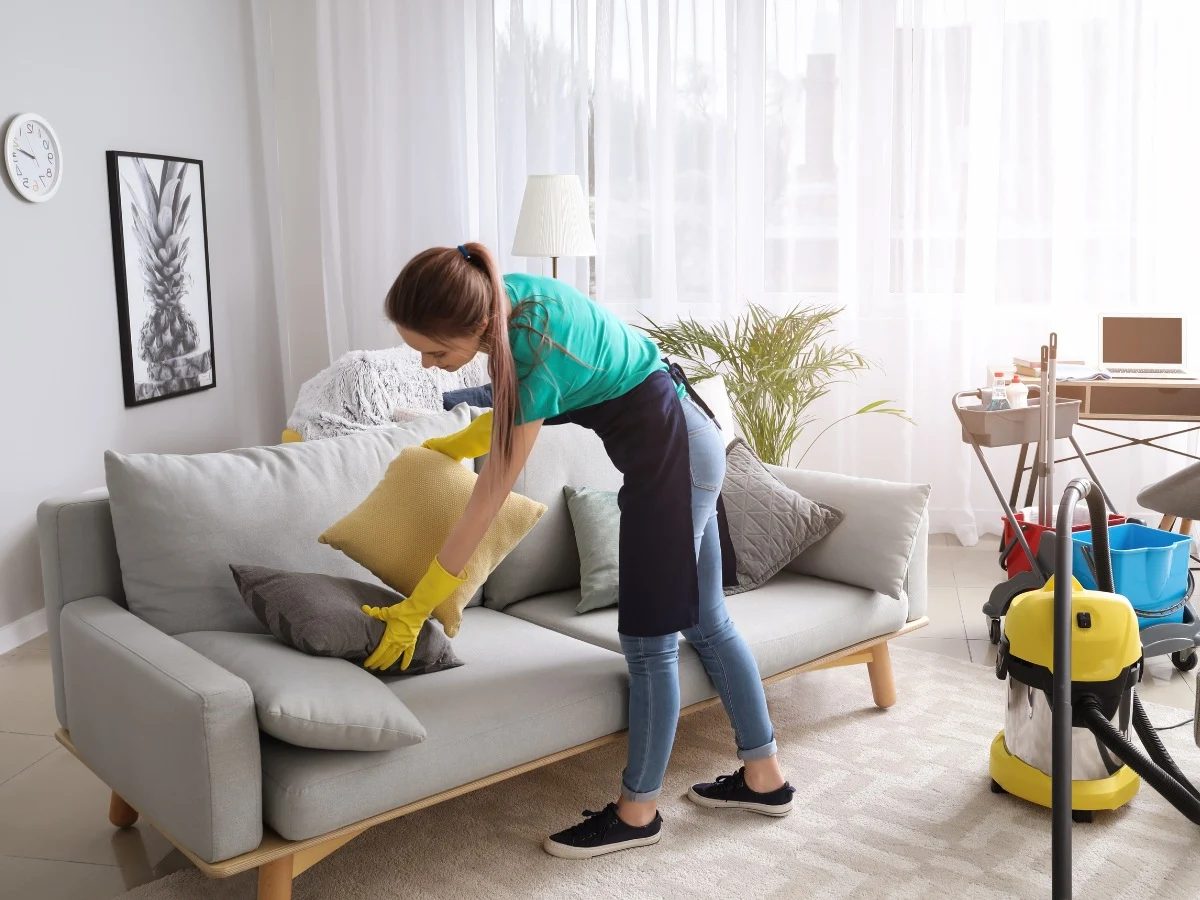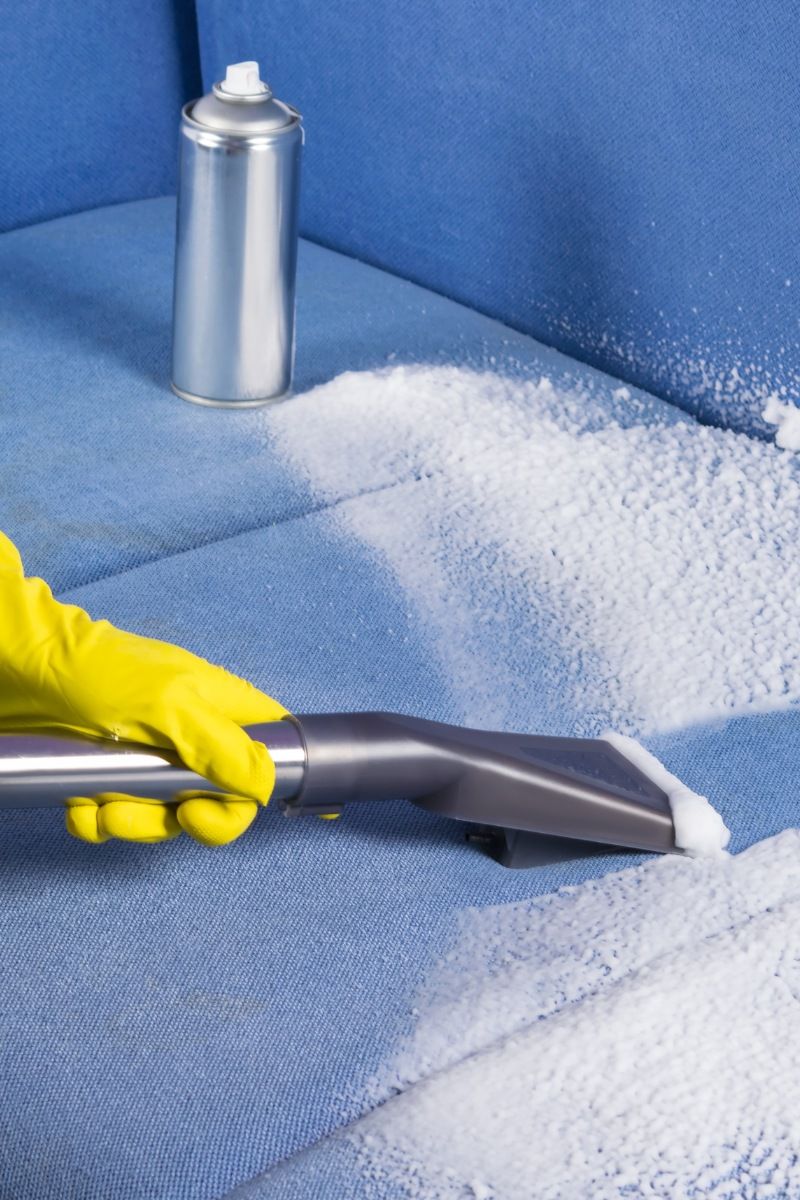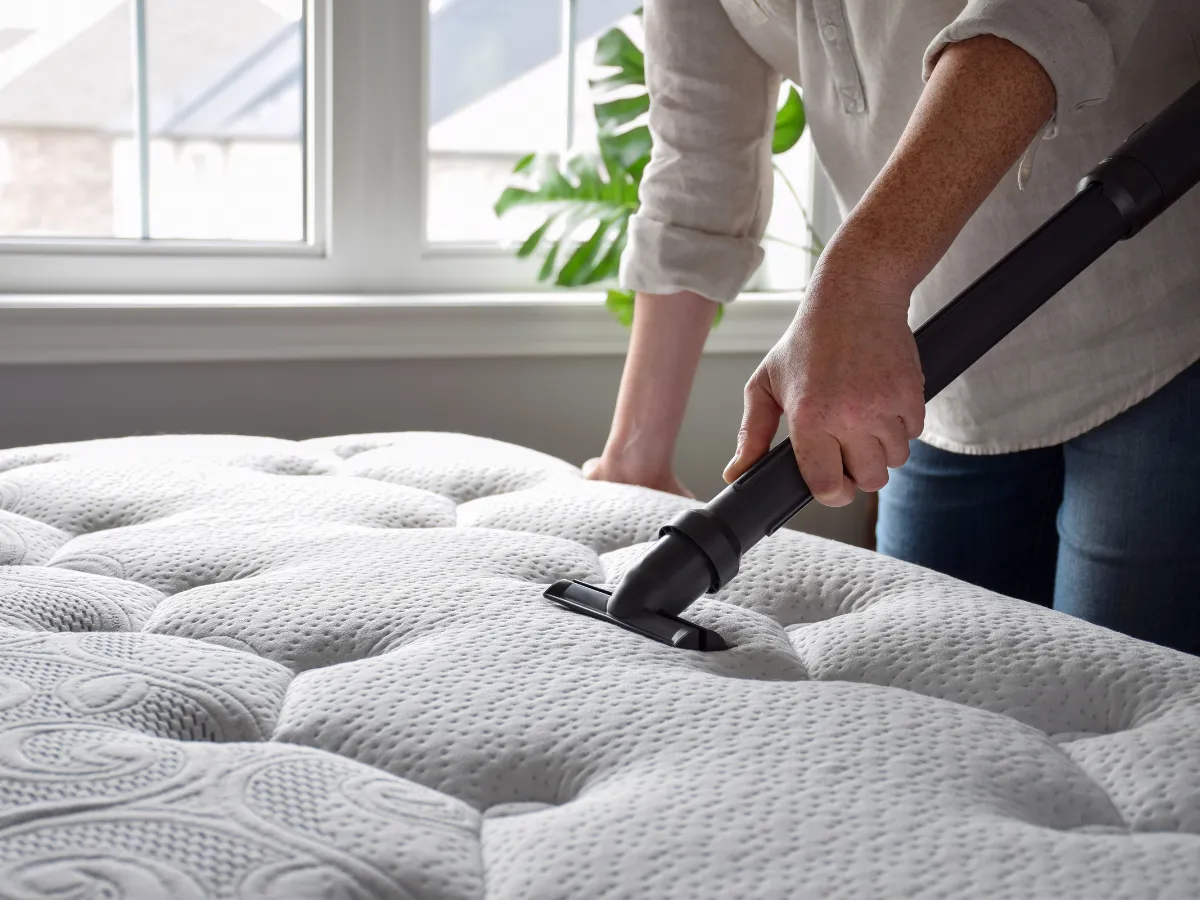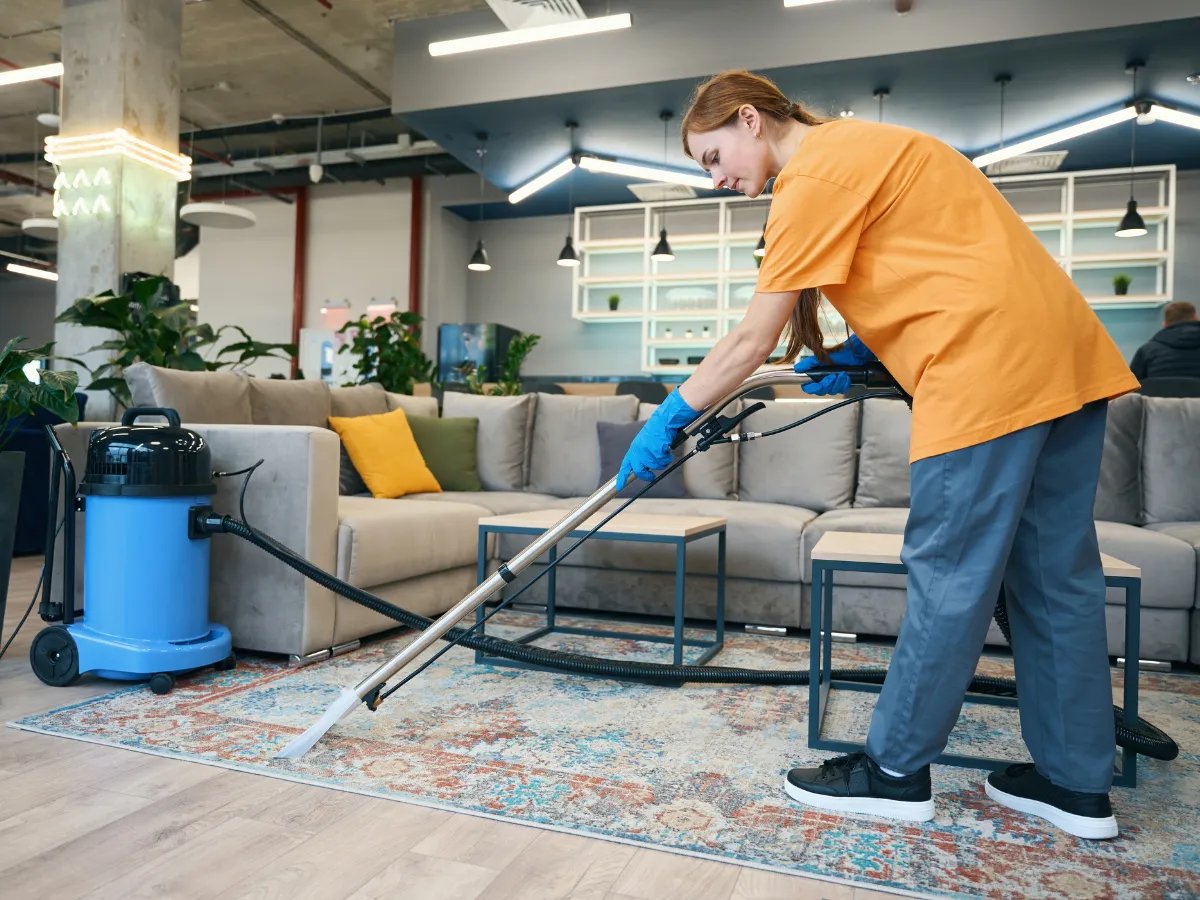Ultimate Guide: How to Remove Mold from a Sofa and Save Your Furniture

You sit down to relax and catch a musty smell. A closer look reveals the dreaded greenish or blackish patches: mold. Besides looking awful and smelling bad, mold can also affect your health. The good news is that removing mold from a sofa is absolutely doable with the right tools and method.
This detailed guide walks you through a safe, step-by-step process to lift stains, eliminate musty odors, and—most importantly—prevent mold from coming back.
Why Did Mold Appear on My Sofa?
Mold thrives in warm, humid, poorly ventilated environments. The most common causes on sofas are:
- Excess Humidity: Rooms with condensation or little ventilation allow the upholstery to absorb moisture.
- Liquid Spills: Any spill that is not dried thoroughly can become a perfect breeding ground.
- Improper Cleaning: Using too much water without fast drying traps moisture inside the padding.
- Poor Storage: Storing a sofa in a damp garage or basement invites mold growth.
- Placement: Sofas pushed against cold walls prone to condensation are at higher risk.
Safety First: Precautions Before You Start
Protect yourself—spores can irritate the skin and respiratory tract.
- Wear Protection: Rubber gloves and an FFP2/N95 mask to avoid contact and inhalation.
- Ventilate: Open windows and doors to create airflow. If possible, work outdoors.
- Spot-Test: Always test products on a hidden area (back or under a cushion) to check for colorfastness.
How to Remove Mold from a Fabric Sofa: Step by Step
This method focuses on fabric sofas, which are the most prone to mold.
Step 1: Preliminary Vacuum
Wearing your mask, use a vacuum with a brush attachment and gently vacuum the affected surface to remove as many loose spores as possible. A HEPA filter is ideal. Empty the bag/bin outside immediately after.
Step 2: Choose a Safe DIY Cleaning Solution
No need for harsh chemicals. These household options work very well:
- Option A: White Vinegar + Water: 1:1 in a spray bottle. Vinegar is a natural fungicide that kills spores.
- Option B: Isopropyl Alcohol + Water: 1:1 using 70% IPA. It disinfects and evaporates quickly, aiding drying.
- Option C: Baking Soda: Great for light stains and odor control. Use as a paste or sprinkle after wet cleaning.
Step 3: Apply and Clean
Lightly mist the chosen solution on the moldy area—do not drench the sofa. The goal is to dampen the surface, not the padding. Let sit for 10–15 minutes.
Then gently scrub in circular motions with a soft-bristle brush or microfiber cloth to lift staining. If the stain persists—as often happens with humidity stains—repeat the process.
Step 4: “Rinse” and Dry (The Most Important Step)
Moisten a clean cloth with water only, wring it very well, and wipe the treated area to remove residue. Finally, dry thoroughly. Use a hair dryer on medium heat or place a fan directly at the spot. The area must be completely dry to prevent regrowth.

Remove the Musty Odor
Once clean and fully dry, the musty smell may linger. Baking soda is your best ally:
- Generously sprinkle baking soda over the sofa surface.
- Let it sit for several hours or overnight to absorb odors.
- Vacuum thoroughly using an upholstery tool.
Clothes can have the same odor issue. See our guide on how to remove mold from clothes for detailed steps.
Prevention: Your Best Strategy Against Mold
- Control Humidity: Use a dehumidifier in damp rooms. Aim for 40–60% indoor RH.
- Ventilate Daily: Open windows for at least 15 minutes, even in winter.
- Pull Away from Walls: Leave a few centimeters between sofa and wall for airflow.
- Act Fast on Spills: Dry spills immediately and thoroughly.
- Sunlight: Whenever possible, expose the sofa to sunlight—UV light is a natural mold enemy.
FAQ: Mold on Sofas
How do you remove mold from a sofa?
Vacuum spores (wear a mask). Then apply a 1:1 vinegar–water solution with a cloth without soaking. Let sit, gently scrub, and wipe with a well-wrung damp cloth. Dry completely with fans or a hair dryer.
How do you remove mold from textiles?
For washable items, pre-treat with vinegar, baking soda, or sodium percarbonate and then wash on a hot cycle if label allows. Sun-drying acts as a natural fungicide.
What’s the best cleaner for mold on sofas?
White vinegar is safe and effective. Isopropyl alcohol also works. Always spot-test on a hidden area first.
What kills mold instantly?
Vinegar and isopropyl alcohol kill spores on contact, but full removal still requires lifting the stain, removing dead spores, and thorough drying.
Follow these steps and you can confidently tackle sofa mold. Success depends on careful cleaning, but above all on perfect drying and keeping humidity in check.
Do Your Sofa Covers Need a Deep Clean?
If your sofa has removable covers and you want them free of mold, odors, and allergens, bring them to LaColada Self-Service Laundry Ponferrada! Our large-capacity washers and sanitizing programs deliver a deep clean that’s hard to achieve at home. Give your textiles their freshness back!
Find Your LaColada LaundryMore Tips on Cleaning and Humidity

How to Remove Mold Stains from Clothes Effectively
A complete guide to remove mold stains and musty smell from garments.

Humidity Mites: How to Eliminate Them at Home
Identify and get rid of mites that thrive with excess moisture.

How to Clean a Carpet at Home: Easy Tips
Practical advice to refresh your carpets without leaving home.